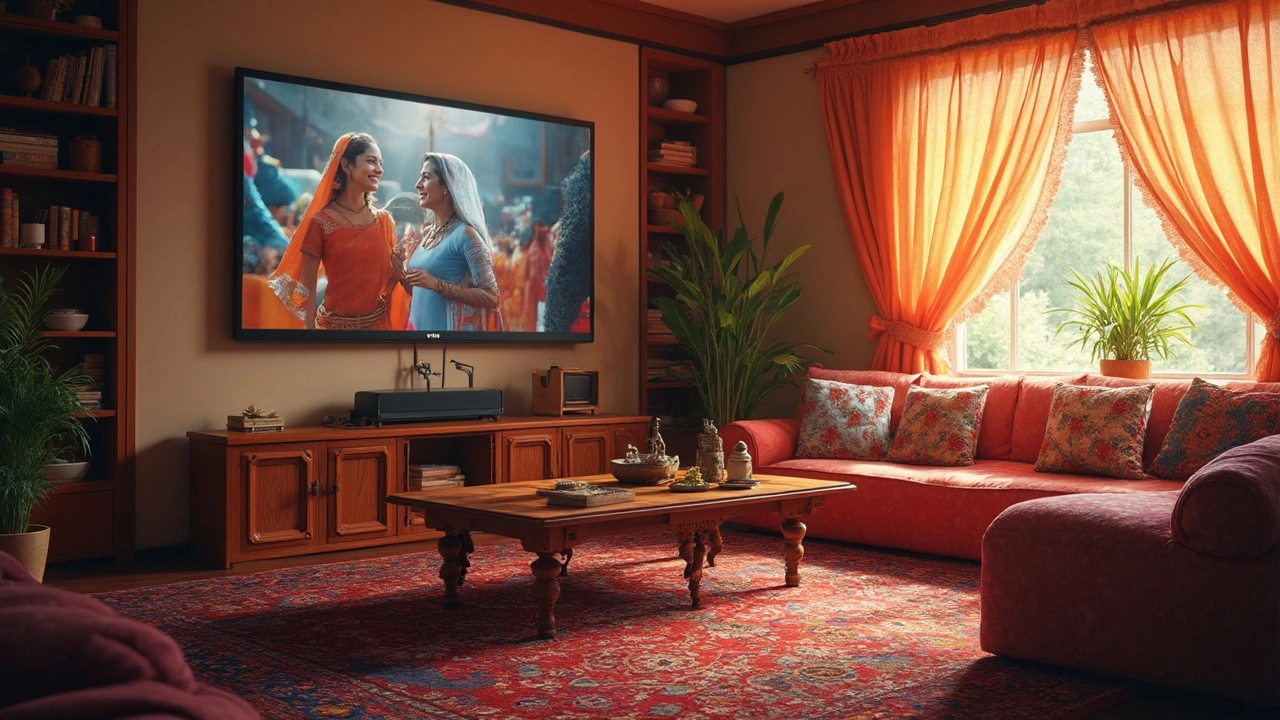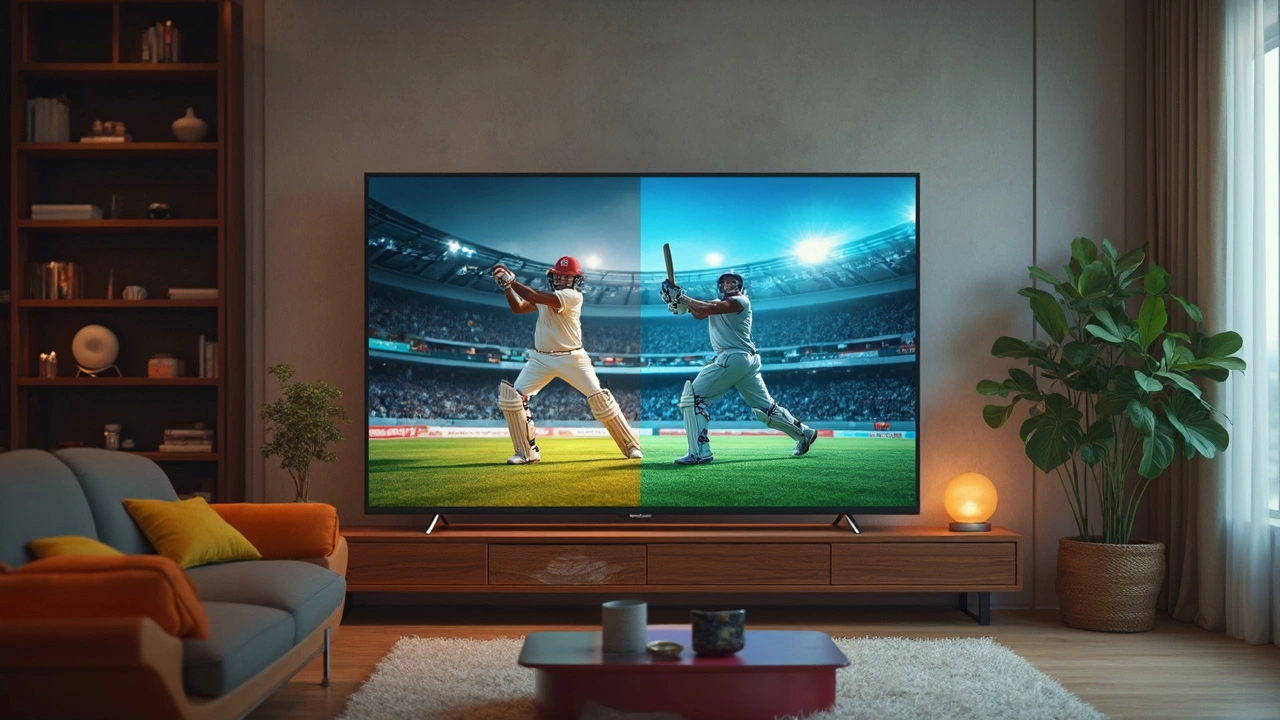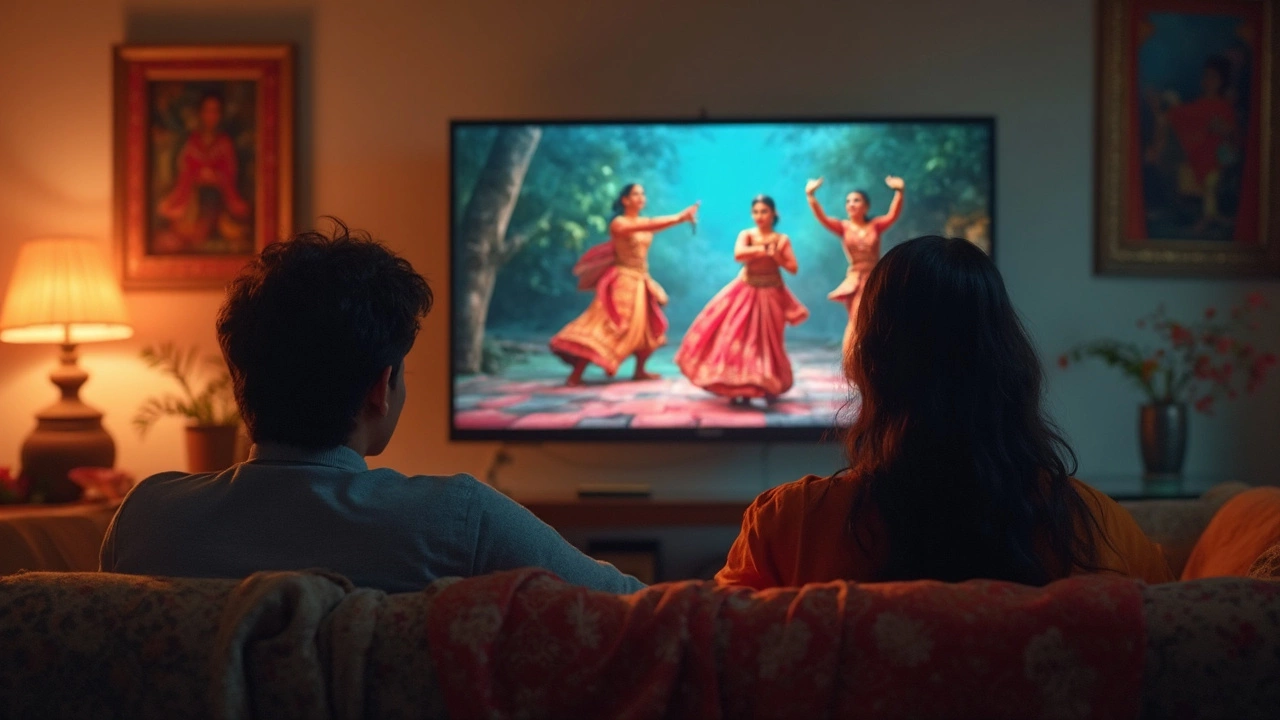
Alright, let's tackle this whole TV dilemma because, let's face it, the more options there are, the more confusing it gets. When you stroll into an electronics store or scroll online, you'll notice a pretty big gap between the cheapest 4K TVs and those deluxe models. So, what gives? What's all the fuss really about?
First off, picture quality tends to be the biggest player in this game. With cheaper models, you get decent clarity, but the pricier ones? They're like magic for your eyes. Think deeper colors, sharper contrasts, and those little details in movies that make you feel like you're right there. If you're all about streaming the latest blockbuster in its full glory, paying a bit more might just be worth it.
Picture Quality
When you're checking out 4K TVs, picture quality is usually the big-ticket item everyone talks about. So, what’s really going on between cheap and expensive sets? For starters, the cheaper budget TV options typically use standard LCD panels. These are decent, but they often struggle with showing vibrant colors and deep blacks, especially if you’re viewing from an angle. Imagine watching a nighttime scene in a movie: those budget displays might leave things looking a bit too gray.
In stark contrast, the more expensive models tend to be OLED or have advanced LED tech, like QLED. What do these letters mean for you? Well, OLED panels can control each pixel independently, giving you inky blacks and a superior contrast ratio. This translates to a more lifelike and immersive viewing experience, with colors that pop right off the screen.
Here's something worth considering: HDR (High Dynamic Range). Many of the pricier TVs come with advanced HDR features, like Dolby Vision. This tech enhances the brightness and contrast, and if you're enjoying an action-packed movie, it’ll almost feel like you're part of the chase.
And let's not forget resolution. While all 4K TVs offer the same number of pixels, not all resolutions are created equal when it comes to clarity and detail. Premium sets might use better processing algorithms that make sure every pixel is doing its best job, especially with fast-moving images.
But, before you reach for the top shelf, think about your room environment. If you mostly watch TV in a bright room, a high-end TV’s deeper blacks may not be as noticeable, and a standard LED might just do the trick. It's also worth checking if your internet can handle 4K streaming efficiently, because buffering can spoil the fun, irrespective of your TV’s price tag.
- Cheap TVs: Basic LCD panels, limited HDR capabilities, modest contrast and brightness.
- Expensive TVs: Advanced panel tech like OLED or QLED, superior HDR, richer color and deeper blacks.
Whether you're a casual viewer or a movie buff, knowing what quality means in different price brackets helps a ton in making a smart buy.
Sound Features
Alright, let's chat about sound. It’s no secret that when it comes to 4K TVs, sound quality can be just as important as the picture, especially when you're setting up that home theater vibe. Now, most budget-friendly TVs, they're okay for your everyday news watching or cartoons for the kids, but they usually skimp a bit on high-quality sound. You'll often find the audio can be a bit tinny or lacking depth.
The more expensive TVs, however, tend to pack in some serious sound technology. We're talking about brands throwing in Dolby Atmos or other advanced audio specs, meaning you might not need to sprint for that extra sound system right away. These features can give you that surround sound effect, pulling you right into the scene with bombastic explosions or the gentle rustle of leaves in the wind. Sounds neat, right?
Also, pricier TVs often come with multiple speakers beyond just basic ones, providing a fuller sound experience. In some cases, they might also include smart sound settings that adapt the audio based on what you're watching – be it a thrilling action movie or a docuseries about dolphins.
So, is it worth the splurge on a premium TV for sound alone? Well, if you're the kind who loves watching movies with booming soundtracks or really hears every note in a concert film, then maybe. But remember, there are always soundbars or external audio systems if your wallet’s feeling light but your heart’s longing for better sound!

Smart Features
When it comes to smart features in 4K TVs, not all models are created equal. The budget-friendly options usually come with the basics like access to popular streaming apps—Netflix, YouTube, maybe even Disney+. They get the job done, but sometimes the interface can be a tad slow or clunky. You might find yourself waiting a couple of seconds longer than you'd like for your favorite series to load.
If you shift your gaze to the more expensive side, you'll discover TVs that offer a seamless smart experience. Imagine built-in voice assistants like Alexa or Google Assistant right at your fingertips. You can ask them to dim the lights, check the weather, or control other smart devices around your home. It's like having a mini personal assistant built into your TV!
Another thing to think about is software updates. Premium models often ensure frequent updates to keep things running smoothly and bring new features to the table. With cheaper models, updates might be less regular, and some platforms might not support them after a while.
Ever thought about gaming on your TV? Higher-end TVs pack in features like low latency modes and support for technology like NVIDIA G-SYNC. That means less lag, smoother gameplay, and just a better overall experience for all you gaming enthusiasts.
In short, while a basic smart platform might cover your streaming needs, the added conveniences and future-proofing you get with pricier models can be a game changer if you're relying heavily on your TV for home automation and entertainment. It all boils down to what you use your TV for and what kind of experience you're looking for.
Design and Build Quality
When it comes to choosing a 4K TV, design and build quality might not be the first things on your list. But, trust me, they can make a big difference in how satisfied you feel with your purchase over time. Cheaper TVs often come with bulkier frames and materials that feel, well, cheaper. Think basic plastic frames and stands that might not last as long or look as sleek lined up in your living room.
On the flip side, the more expensive options don’t just pump up the price for no reason. You're looking at much sleeker designs, often with thinner bezels and stand options that feel rock solid. Materials like metal and glass replace plastic, giving them a more premium feel. This isn’t just about looks – a well-built TV is often more durable, too. It’s like having furniture that doesn't just fill space but adds style to the room.
Another thing to note is the placement and design of ports and cables. Premium models often come with clever cable management features, keeping those inevitable wires out of sight, so you don't have a tangled mess behind your TV stand. Plus, they may boast a better design for wall mounting, lying almost flush against the wall for that posh, cinema-at-home vibe.
Manufacturers know that first impressions matter, so some of the expensive 4K TVs add extra touches like ambient lighting features that enhance your viewing experience without lightening your wallet every time you pop a movie on. If aesthetics and durability are high on your priority list, those few extra pounds might be money well spent.

Value for Money
When it comes to pulling the trigger on a 4K TV purchase, the question of value for money often pops up like an unwanted ad. So, what are you really getting for your cash? Well, the clue's often in those extra pennies you spend. Cheaper TVs might save your wallet upfront, but they often cut corners where it counts - like picture and sound quality.
Consider this: a budget 4K TV could be perfect if you're just looking to upgrade your old set without any frills or if the TV-watching balance in your house tips more towards cartoons and less towards cinema epics. But, if you've got movie nights on the regular, splurging a bit on a premium model might be worth your while. These bad boys usually pack a punch with better panel technologies like OLED or QLED, providing richer colors and deeper blacks that make scenes pop.
Now, let’s talk features. High-end models often come equipped with better smart features and smoother interfaces, making navigating apps and streaming services a breeze. If browsing through Netflix feels like a chore on your current setup, an upgrade could save you time and frustration.
Then there's durability. While it’s a bit of a gamble, premium TVs generally have more robust build quality. They’re less likely to give you headaches with frequent reboots or awkward viewing angles that leave you craning your neck.
A quick look around might reveal some compelling stats. For instance, reports show that pricier TVs tend to have fewer issues over time, often lasting several years longer than their budget counterparts. Here's a peek at how satisfaction and reliability compare:
| TV Type | Average Lifespan in Years | Customer Satisfaction (%) |
|---|---|---|
| Budget 4K TV | 5-7 | 70% |
| Premium 4K TV | 10+ | 85% |
Ultimately, the decision's on you. Consider how much you'll actually use those enhanced features and whether the cost aligns with your viewing needs. The bottom line? A top-tier TV might hit the wallet hard now, but if you're a heavy user, it could pay off in the long run with sharper, richer views and a smoother overall experience.